Lebanon-Italy: same problems and a common way out?
- 15 dic 2021
- Tempo di lettura: 14 min
Aggiornamento: 16 dic 2021
By Elie Elias and Lorenzo Somigli - A comparative proposal between two centralized countries that can benefit from a localistic reform.
Two countries, a long friendship, a common sea, similar problems: the same exit strategy? Lebanon and Italy have many common traits and some clear differences. Both are centralized country with marked differences between territories, both are experiencing a long-term political-institutional deadlock and are wondering how to get out. According to Elie Elias and Lorenzo Somigli, one way out could be the large devolution of power to local territories and communities. The implementation of a local and bottom-up model could reinvigorate the relationship between the individual/citizen and institutions and improve the transparency and effectiveness of the decision-making process.
Elie Elias born in Beirut is a researcher at the University Holy Spirit of Kaslik (USEK) and teacher of Arab history and history of the 20th-century Middle East in several Lebanese universities. Lorenzo Somigli born in Florence is a Journalist and MENA Analyst for think tanks, foundations and research centres, co-author with Roberta Văduva of “Now we know your roots are in us” after a reportage in Lebanon.
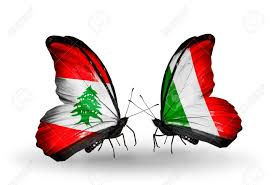
Index of contents
1. General overview: a global need for subsidiarity.
2. Affinity and differences: a proposal of comparison.
3. Italy, a country aspiring to be federal stopped in midstream (L. Somigli).
4. Pluralism in Lebanon: Remarks on the centrality of the Lebanese State (E. Elias).
General overview: a global need for autonomy
More and more countries across the planet, over the past thirty years, initiated an articulated decentralization process. In many cases, like Spain or Belgium1, the localistic changeover was the only way to save the unity of state freezing re-emergent local, ethnolinguistic, religious fractures and giving to territories complete representativeness. Germany2 has adopted the federal formula to hold the Hanseatic, Prussian, and Bavarian souls together, also facing the complex soldering between the two Germanies.
Why devolution? Devolution arises from awareness: there isn’t a real centre, there are peripheral centralities. The centre of legitim power can release decisions or imperative commands, but communities and individuals exist independently. Molecular relationships and ordinary practices are stronger than any central power, enable to standardize exceptions and variables. Social facts are much more lasting than institutions, according to Braudel3. Individuals have rights by nature even without the state. Consequently, federalism is an interesting model because assembles a large devolution in favour of all the territories with a strong figure like the President, territories can elaborate and implement autonomous policies but there are general and common guidelines. No one can subdue the other, no power can crush the other. Check and balance is the guiding star. It also guarantees speed of decision and versatility, crucial in a globalized world, and, by its nature, is a flexible model tailored to local needs and specificities.

Affinity and differences: a proposal of comparison
Lebanon and Italy claim a centuries-long story of friendship since the time of Fakhr al-Dihn II4 but also share similar criticalities. Sluggishness, inefficiency, opaqueness in the decision-making process frustrate faith in democratic institutions and fuel anti-politics. Both experienced a forced centralization, on the example of France, after centuries of municipal and regional self-government: in Italy because of the Unification (1871) completed by Savoy, in Lebanon during the protectorate after the dissolution of the Ottoman Empire. Both are at the centre of global interests and expansionist aims. Both, especially post-1989, tried to reform the polity in a less-centralized way but the process was incomplete and the results in many cases unsatisfactory. In Lebanon and Italy, at the lower administrative levels, there are forms of local powers that guarantee speed and transparency. There are also many differences between those countries. Lebanon was a unique example of coexistence between numerous religious confessions, while Italy is a Catholic nation that launched a rising religious pluralism after the review of Concordat. Empowerment of territories could be the way to write off the lack of accountability and confidence maybe with varying degrees. Italy, a country aspiring to be federal stopped in midstream - The complex process of unification. The Italian people exist. Italy exists geographically for centuries, since the time of Augustus when the emperor defined administrative areas that still now form the Italian regions like Aemilia, Apulia, Latium, and Liguria. The Catholic religion, especially after the Concilium of Trento, guaranteed social stability and preserved Italy from religious war. Beyond the variety of dialects, the Italian language is crystallized via literature. However, the Italian nation is just a recent invention.
Geopolitical upheavals, great economic interests, and the exuberance of the Savoy – grew up in the interspaces of the great European powers – facilitate the creation of the Italian nation in the 19th century, which was for centuries a land of conquest for European forces. The landing of Garibaldi in Marsala (Sicily), covered by the English gunboats, marks the end of one of the most advanced kingdoms, the Kingdom of Naples, a strong maritime opponent, and scores the definitive victory of the Kingdom of Sardinia. The Vatican falls shortly after.
The subsequent unification process is uneasy: some territories are annexed while others like Tuscany (1860) or Veneto (1866) vote5 – there are many frauds – to join the Savoyard Reign. The Italian unification is not a bottom-up process with grassroots participation, is a progressive annexation. There are also many phenomena of strong and violent rejection like Brigandage in the South. Meanwhile, different political figures – right-wing, left-wing, socialists (Salvemini6), catholic (Don Sturzo7) anarchist, communists – take a stand for devolution. The conquest of Rome (1871) spells the end of the temporal power of the Catholic Church and opens a large fracture in most of the Italian population. The Catholic population is formally invited by the Pope8 to not participate in public life undermining the unity project. The following years are marked by a radical secular contrast against religion, with the aim of enfranchising Italians from Catholicism. This raising radicalization opens a chasm recomposed only by the Concordat (1929), reviewed in 1984.
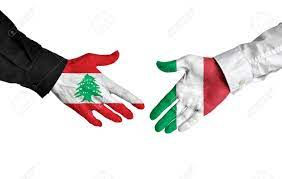
Italy presents many divisions and fractures. The industrialized North tends to Mitteleuropa while the Sud is totally Mediterranean, in the middle the “Third Italy” composed by small-medium town and manufacturing districts inheritor of the artisanal tradition. Some cities like Venice and Genova practiced the model of marine republics. The North is captained by Milan, the “capital of labor” in opposition to Rome: real country versus legal country. Sicily is the heart of the sea and divides the “two Mediterraneans”.
The progressive annexation by Reign of Sardinia without the involvement of masses, the fraudulent plebiscites, the destruction of the Reign of Naples, one of the more advanced, the offense to the Catholic faith: these incongruities undermine the sense of belonging in the nation and leave a deep wound in the Italian people. After the Unity, the Savoyard Monarchy adopts a strictly centralized system on the example of the France and extends the Constitution of Reign of Sardinia, the Statuto Albertino9 to all the new reign.
The slow implementation of the Constitution
Italy, in the Twenties, experienced a drastic shrinkage of freedoms. Fascism, with the support of Monarchy, enters the Institutions of Liberal State and transforms it into a totalitarian one. Two decades of fascist orthodoxy erase every expectation of subsidiarity: no more regional constituencies, no more local powers, majors nominated by the central power, and loyal to the regime. It’s a traumatic experience for Italy that even today bears the scars.
In direct opposition to this complete centralization, the new Constitution entered into force on the 1st of January 1948 incorporated localist requests. Article 5 states: The Republic, one and indivisible, recognizes and promotes local autonomies; it implements the widest administrative decentralization in services that depend on the state; it adapts the principles and methods of its legislation to the needs of autonomy and decentralization.
The new constitution recognizes the ethnolinguistic minorities, heavily penalized during the fascism, and establishes twenty ordinary regions (art. 131) and some “special statute” regions (Sicily, Sardinia, Trentino, Friuli-Venetia-Giulia, and Valle d’Aosta). However, the implementation of the ordinary (basic law) regions dates to the 1970s and it’s due more to petty political reasons than to a real trust in devolution utility.
That’s exactly why the capability of regions to influence and produce policies remains cumbersome. Regions do not have real power; they can adapt the rules produced by Rome which dictates the general framework and the stakes. The regions take resources from the citizens, send them to Rome, which transfers part of them for the regional services. The result is a regulatory conglomerate and distrust in politics.

The resurfacing of territories and the incomplete reform
The 1990s are a decade of radical change. The fall of the Berlin wall discloses new issues and breaks the Cold War equilibrium. The Italian political system, based on the primacy of DC (Catholic Democracy) in opposition to PCI (Italian Communist Party) collapsed, and territories, on the push of globalization and European integration, reclaimed more autonomies10. The request for large devolution is promoted especially by the northern regions like Veneto and Lombardy, one of the Four Motors of Europe. The request stems from the idea that the unproductive central state devours resources from thrifty territories without giving back services. More autonomy can upgrade the standard of democracy and recompose the chasm between politics and citizens.
Following the incumbent pressure from the territories (in some cases some regions have threatened to secede), at the end of the 90s, there is a phased concession of autonomy by the central government, especially in terms of lawmaking and administrative competencies. The reform of the Fifth Title of the Constitution (2001) is the culmination of the process and marks a significant step towards greater participation of all the territories (regions, provinces, municipalities, mountains authorities) whose role is fully recognized. The biggest novelty of this reform is the variation in the field of legislative competencies: some matters are in the “exclusive competence” of the central state, some of “concurrent competence” between the state and the regions.
The modified art. 117, third comma, states: Matters of concurrent legislation are: international relations and relations with the European Union of the Regions; foreign trade; job protection and safety; education, without prejudice to the autonomy of educational institutions and with the exclusion of education and vocational training; professions; scientific and technological research and support for innovation for the productive sectors; health protection; Power supply; sports regulations; civil protection; the government of the territory; civil ports and airports; large transport and navigation networks; ordering of communication; national energy production, transport, and distribution; complementary and supplementary pension; coordination of public finance and the tax system; enhancement of cultural and environmental assets and promotion and organization of cultural activities; savings banks, rural banks, regional credit companies; regional land and agricultural credit institutions. In matters of concurrent legislation, the legislative power is vested in the Regions, except for the determination of the fundamental principles, which is reserved for the legislation of the State.
The reform introduces a clear principle of subsidiarity: regions have the power to intervene in regulatory gaps. The reform is inspired by a federalist vision for the European Union which, in the intentions of the promoters, had the objective of favoring exchange, direct interaction between the regions of Europe, and the sharing of best practices. The project of a federal Europe has remained a dead letter, but efficient territories started cooperating.
This devolution enables some virtuous regions to emerge reaching a European level in terms of quality of services, especially in the health sector but also sharpens the inequality between North and South. After the reform, some regions take flights and often anticipate state legislation. However, there is a flourishing of laws, often different from North to South, which penalizes all the Italian system. Now Italy has an asymmetric and dysfunctional regionalist system. The regions with special status remain intact. Same virtuous regions reached an international standard. Others failed and are seen by citizens as just an additional expense. Anyway, after the reform of V Title, there were an attempt of federal reform (2006) without success, but also a contrary attempt to revoke powers devolved to regions (2016), also unsuccessful.
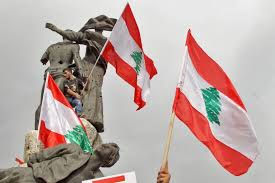
Although, the issue of territories remains unsolved. The devolution of legislative powers is the best that could be achieved without changing the Constitution from the ground up (in Italy is said “federalism with the unchanged Constitution”). Now Italy is a less-centralized country with some important powers devolved to local organisms, but the process of devolution is incomplete and the application cumbersome: Italy is stopped in the midstream.
Differently from Lebanon but also from Belgium or Spain, Italy hasn’t ethnic, religious, linguistic fractures. There was an incongruent unification and there were some traumatic ruptures, but Italian unity has a real basis. A federalist adjustment could be a natural – not radical reform – to improve accountability and solve the long-standing contradictions in Rome-territories relationships.
Localism isn’t a return to past Italy, isn’t a disruption of the much-needed unity: it’s a way to correct relevant mistakes in the unification process. So localism could ameliorate the administration and strength the unity. The centralization model was the product of the time: it had successes and incongruities, now problems, instances, and global perspectives call for a new solution.
In historical terms, Lebanon has existed to safeguard the multiple specificities of the cultural communities present in its territories11. Initially, Lebanon was born out of a historical claim for the preservation of the political and religious freedom of the Christian communities especially the Maronites as an expression of a very long struggle of the Orient minorities to claim their rights to be represented in the system. And that explains why the religious institutions preserved their powers in dealing with the religious issues of their resected community. Since the inception of the Lebanese entity in 1920, the country has been ruled by a centralized political and administrative regime. The centralized administrative regime is defined as a regime where the decision-making power is centralized in the hands of the officials who are at the top of the pyramid; a regime where the power is exercised and concentrated in the central government in the capital city and its respective representations in the regions (de-concentration), with no participation from the part of elected local bodies. Centralization is thus political, restricting political power to one sole State institution, and economic, acting under the supervision of the State by looking in the economic enterprise in all its aspects and orienting it as planned.
The main component of the central authority is the idea of socio-national fusion that has proven to be successful in countries with a religious and cultural majority. As for the Lebanese case, its society is composite and stands out as plural and respectful of the rights of the communities as confirmed in the National Pact. The paradox here was that a centralized homogeneous regime was applied to a heterogeneous society.
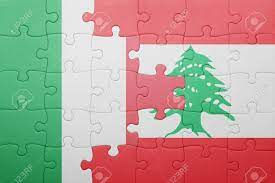
In observing the evolution of the Lebanese entity, since its inception and until nowadays, we can make the following observations: 1. The (political and constitutional) historical context has evolved in a vicious circle, as of the constituent divergences: repetitive political conflict – dead-end reached – breakup between communities (politically or violently) – repeated temporary settlements (which do not deal with the roots of the problem but deal just with the superficial aspect of the crises); 2. Growing erosion of the constitutional institution’s functions and efficiency leading to paralysis and a detrimental division of the remnants of the power to all protagonists (sectarian and family feudalism, internal awareness of communities that is becoming more and more isolationist and limited to defending the rights of one’s community instead of looking for common denominators to all communities…); 3. A crisis of political behavior between communities in many aspects. In terms of power: the balance of power always underlies the political decision, which empties partnership and consensus from their aims and leads to unstable constitutional/political equations that indicate the prevalence of the logic of dominance in the political mindset of the communities (which is contrary to the logic of mutual acknowledgment and coexistence…). A political practice that is consensual in appearance but uses the logic of consensus depending on the circumstances, in favor of self-interest, and not as a principle that sets for and follows up stability for a compound society; 4. According to statistics and data on the demographic and economic situation of the components of the Lebanese society, the use of this centralized administrative regime has constituted a threat to the free pluralistic existence in general and to the historical Christian communities in particular.
The Lebanese communities show social, political, and cultural paradoxes and these are mainly reflected constitutionally on duplication between the constitutional text (and its definition of the State and the regime) and the customs that take the State and the regime into directions that are against the constitutional content.
On one hand, the Constitution asserts the political centralization and the unity of institutions and the people. While the customs confirm a hybrid formulation of the State: it is neither a centralized state nor a federal one. We are in a kind of disguised, distorted, and incomplete federalism:
A plural societal basis that gives the communities a quasi-autonomy in their affairs… (this is what some call “personal federalism”).
On other hand, single united institutions, and central power (as a formal expression of centralization), against two customary factors that seriously touch the logic of federalism: duality in the function of the constitutional institutions as an expression of the State’s structure on one hand, and as frameworks of encounter of communities at the level of the central power on the other); plural sectarian composition of the institutions as an expression of the partnership with the central power.

The continuity and stability of a complex society require a minimum of two things: socially, guarantees for existence (identity, economic, living, political…) for communities within the frame of their specificities and autonomy; politically, a form of State and regime that relies on
the rule of equal representation and equal influence in decision making, which obviously requires the exclusion of the balance of power.
Decentralization constituted a constant claim during the 1960s. Most politicians and public figures concerned with administrative reforms in Lebanon, expressed repeatedly their wish to reform the political and administrative State regime by adopting administrative decentralization and granting local governments more powers and responsibilities in the management of their own affairs and in delivering public services that meet the needs and priorities of the people of their areas.
There is not one model of decentralization, there are multiple models, each fitting the specificities, requirements and needs of the society where it is applied. Consequently, there is no standard pattern for decentralization that is always applicable and in all places.
The principle of expanded decentralization represents a pact-based and constitutional solution that was used in the “Taëf accords”12 which see that applying expanded decentralization is one of the major reforms that need to be enforced, and this is the motive for the whole Lebanese community to propose this project.
Today, more than two decades after the adoption of the “National entente paper” known as the Taëf accords, the administrative decentralization project is still of no avail in spite of promises made by the successive governments in this regard and all relevant proposals and draft laws. W0e believe that Lebanon is a compound conflictual society that lacks the basic conditions for its stability and internal peace, which constitute the basis for a stable constitutional structure. What prevails is a crisis of political and ideological thought that does not meet the requirements of the diverse society as to the differentiation inequality and equity (socially and politically).
An inadequate understanding of the logic and notion of unity prevails achieving political cohesion and translating it constitutionally within the framework of centralization, and one of its current expressions is the demand for cancellation of political sectarianism; building unity on an ideological basis (of inclusive character), at a time when the diverse society requires a federal unity that is based on common interests. In addition to the aforementioned factors, there is concern about the emergence of fundamentalist religious ideologies (Hezbollah as an example) that are totalitarian and reject pluralism, whose logic rejects the principles of differentiation and equality, and which seek to favor the interest of a regional religious enterprise at the expense of the Lebanese national interest, since the mid-1980s.
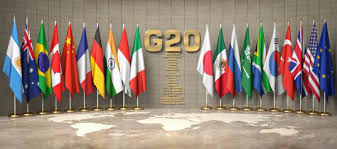
Therefore, we believe that it is not possible in the foreseeable future to settle the conflictual state of the Lebanese society. This means practically that it is impossible to reach a stable form of the State and the regime, which will then continue to oscillate with the waves of the prevailing political thought and the unstable political practice.
Constitutional coupling in the political system between the logic and spirit of the classical parliamentary regime on one hand, and the logic and spirit of consensus on the other hand, which gradually produces an acknowledgment of a consensus that empties the constitutional text from its efficiency. Furthermore, there should be efforts made to limit the effects and impact of conflictual state and focus on mitigating the tensions by looking for soothing solutions that ease the relationships between communities. These might constitute a gradual preamble for stability based on an adequate constitutional format.
The current Lebanese situation does not require an exacerbation of the tension among its components and a revival of additional factors of fear and caution, but rather a search for exits that mitigate tensions and reassure all communities about their existence and their cultural, social, and political specificities. Therefore, we can say that betting on a punctual revival of the centralized regime will only lead to more tensions and a stronger feeling of frustration and concern about the future.
Bibliography
D., L. (1968). I.R.F.E.D.-Liban (Mission) - Besoins et possibilités de développement du Liban. Revue Économique, Programme National Persée, pp. pages 364-365.
Hanf, T. (2015.). Coexistence in Wartime Lebanon : Decline of a State and Rise of a Nation. London: The Centre for Lebanese Studies in association with I.B. Tauris.
Malsagne, S. (2011). Fouad Chéhab 1902-1973 – Une Figure Oubliée de l’Histoire Libanaise. Paris: Editions Karthala et Ifpo.
Rabbath, E. (1986). La formation historique du Liban politique et constitutionnel : essai de synthèse. Beirut: Université libanaise.
Theodor Hanf, Antoine N. Messarra, Hinrich R. Reinstrom. (1986). La société de concordance : approche comparative. Actes du symposium international organisé par le Goeth-institut sur "La régulation démocratique des conflits dans les sociétés plurales". Beirut: Universite Libanaise.
Harik, I (2003) "Toward a new perspective on secularism in multicultural societies, Lebanon in limbo" - Edited by Theodore Hanf and Nawf Salam - Berlin.
الدستور اللبناني. (2004).
وثيقة الوفاق الوطني. (2021). Retrieved from مجلس النواب : https://www.lp.gov.lb/CustomPage.aspx?Id=6







Commenti